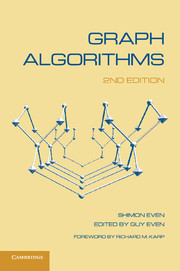7 - Planar Graphs
Published online by Cambridge University Press: 05 June 2012
Summary
Bridges and Kuratowski's Theorem
Consider a graph drawn in the plane in such a way that each vertex is represented by a point; each edge is represented by a continuous line connecting the two points that represent its end vertices, and no two lines, which represent edges, share any points, except in their ends. Such a drawing is called a plane graph. If a graph G has a representation in the plane that is a plane graph then it is said to be planar.
In this chapter, we shall discuss some of the classical work concerning planar graphs. The question of efficiently testing whether a given finite graph is planar is discussed in the next chapter.
Let S be a set of vertices of a non-separable graph G(V,E). Consider the partition of the set V – S into classes, such that two vertices are in the same class if and only if there is a path connecting them that does not use any vertex of S. Each such class K defines a component as follows: The component is a subgraph H(V′,E′), where V′ ⊃ K. In addition, V′ includes all the vertices of S that are connected by an edge to a vertex of K, in G. Also, E′ contains all edges of G that have at least one end-vertex in K. An edge, where both u and ν are in S, defines a singular component ({u,ν}, {e}). Clearly, two components share no edges, and the only vertices they can share are elements of S.
Information
- Type
- Chapter
- Information
- Graph Algorithms , pp. 146 - 167Publisher: Cambridge University PressPrint publication year: 2011
